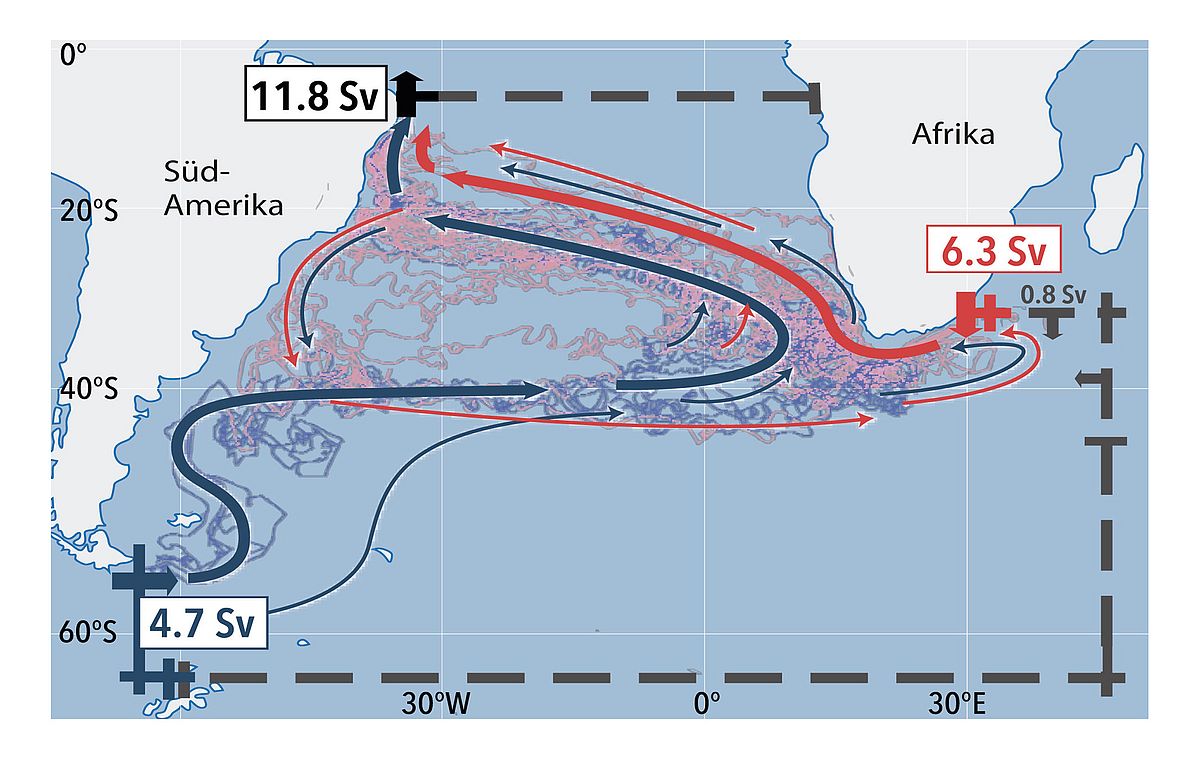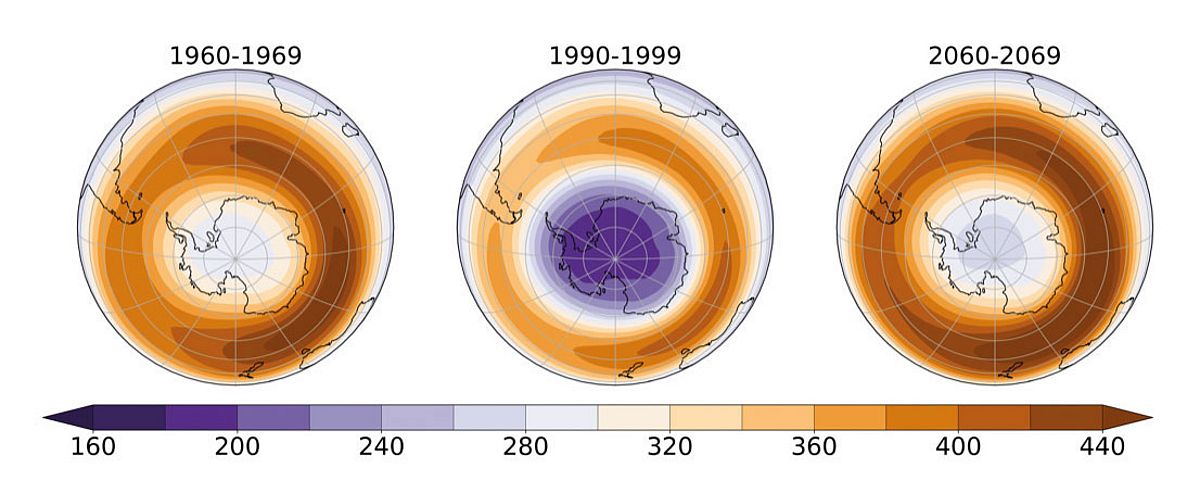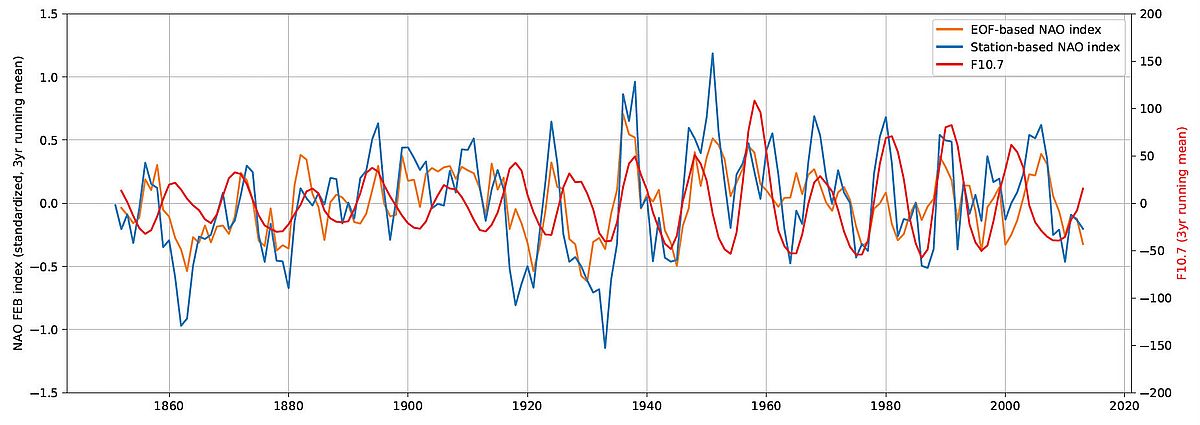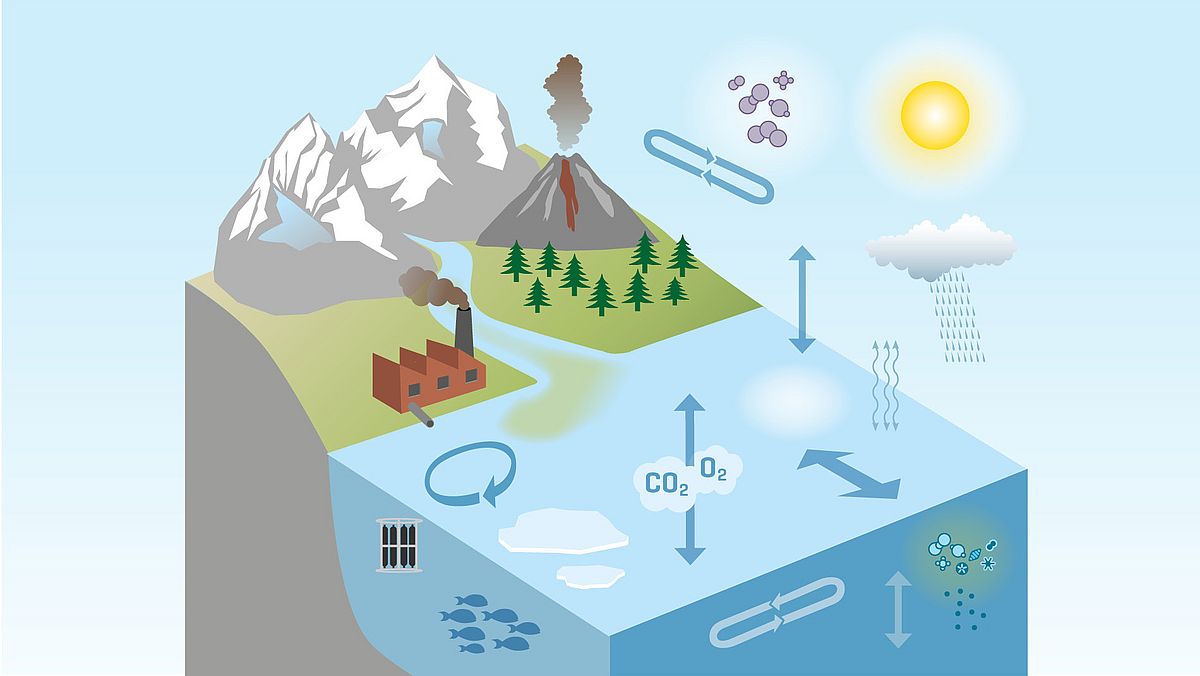Model Simulations: Examples
![[Translate to English:] Simulierte Strömungen um Südafrika](/fileadmin/_processed_/3/f/csm_agulhas_wirbel_3a481a233a.jpg)
Week-long expeditions on the vast ocean, taking measurements, obtaining samples to be studied on board or later in the laboratory on land - this is a very important component of marine research. But there are also researchers at GEOMAR who rarely or never go to sea: The modellers at the research unit Ocean Dynamics. They describe the Earth system, or parts of it, with the help of physics, which is the basis for model simulations. The main goal of their research is to assess regional changes in the ocean as a consequence of changing climate conditions - on the one hand by understanding the dynamic causes and mechanisms of ocean transport variability on interannual to decadal time scales, and on the other hand by identifying critical processes that need to be resolved in coupled climate models.
Dispersal and Mixing of Seawater From Different Ocean Regions

The dispersion pathways of seawater between different ocean regions play an important role, because they also transport heat, CO2, oxygen, fish larvae and (plastic) debris, among other things. In ocean models, such tracks can be investigated with the help of so-called Lagrangian analyses: virtual particles are followed in the simulated current on their way through the ocean. In recent years, such methods have been further developed at GEOMAR together with international partners in high-resolution ocean models and used for many studies.
A prime example is the simulation of the propagation paths of the global overturning circulation. Despite a growing number of ocean observations, there is not yet enough data to represent the entirety of the current system. Ocean models offer solutions, however, the spatial resolution of the models is important because parts of the large-scale circulation are influenced by smaller-scale processes. For example, water transport from the Indian Ocean into the Atlantic is overestimated in models without mesoscale eddies (10-100 kilometres). Because water from the Indian Ocean is warmer and saltier than from the Pacific, the ratio of the two water transports influences the temperature and salinity in the South Atlantic and thus potentially the strength and stability of the overall circulation. The variability of water transports from the Indian Ocean and the Pacific, as well as the influence of mixing processes, are therefore the subject of current research.
The Role of the Ozone Layer in the Earth's Climate System
Although the stratosphere is located at an altitude of 10 to 50 kilometres, it plays a role for our life on the Earth in different ways. On the one hand, extreme events in the stratosphere can penetrate into the lower layers of the atmosphere and influence the daily weather there. Secondly, the stratosphere contains the ozone layer, which acts as a shield against harmful ultraviolet (UV) radiation. In the mid-1980s, it was recognised that some industrially produced substances, such as chlorofluorocarbons (CFCs), lead to the destruction of the ozone layer, especially over Antarctica, where the so-called ozone hole formed. The danger of the ozone hole was quickly discovered and the use of the responsible substances was regulated just two years later. Today, there are indications that the ozone layer is slowly recovering and will close again by the middle of this century - a success story of international political cooperation. But stratospheric ozone is not only important for the absorption of UV radiation, it also has an influence on the dynamics in the atmosphere. Fluctuations in ozone influence the position of the jet stream and can thus affect surface temperatures and ocean currents.
At GEOMAR, different aspects of the interactions between the stratosphere and the Earth's surface are studied with the help of coupled climate models. In order to be able to look into the future and better understand the interplay of ozone concentration, greenhouse gases and dynamics in the atmosphere, the chemistry in the middle atmosphere is also calculated interactively in the model. In this way, the influence of the regeneration of the ozone layer on the surface can be recorded under future climate conditions.
Coupling Long-Term Climate Variability in the Northern Hemisphere with Solar Fluctuations
The so-called North Atlantic Oscillation (NAO) is one of the most important circulation patterns in the northern hemisphere with direct influence on weather and climate in Europe. Scientists at GEOMAR and other international institutions were able to prove that the NAO is influenced by the natural, eleven-year cycle of solar activity. For the investigations, a climate model was used that includes the ocean and the atmosphere. In addition, this model also included a detailed atmospheric chemistry, which was particularly good at taking into account the effect of variations in ultraviolet radiation with the sunspot cycle in higher layers of the atmosphere. This additional component was the key to transferring the variations in solar irradiation from the stratosphere at an altitude of 10 to 50 kilometres to the lower atmosphere via complex mechanisms. For this purpose, experiments were conducted with and without the influence of the eleven-year solar cycle.
The researchers found that as soon as the amplitude of the solar cycle is large enough, a signal can be observed at the Earth's surface, and the decadal component of the NAO is synchronised with the solar cycle. This has been observed both in experiments and in observational data reaching back to the 1930s. During this period, the sun's fluctuations were particularly large, so that it set the pace for the NAO. Thanks to the large amount of model data, it was also possible for the first time to determine the decadal predictability associated with the eleven-year solar cycle: In parts of the North Atlantic, the sun is responsible for up to 25 per cent of the decadal variations in surface temperatures in winter. Since in the same region the predictability due to other external clock generators such as greenhouse gases is particularly low, the hope is high that the new findings will further improve decadal forecasting systems.





